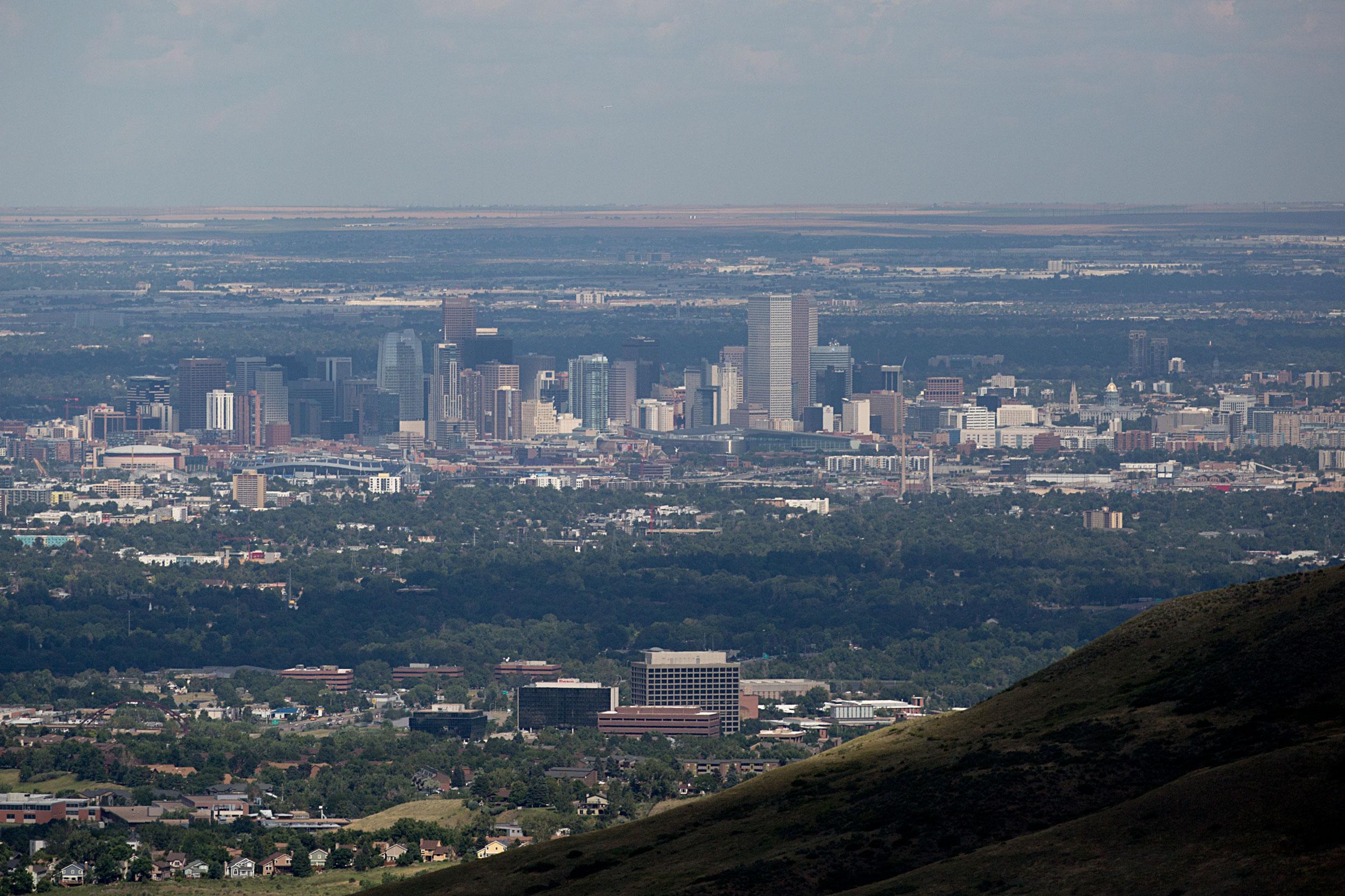
Heat waves and freezing temperatures won’t be the only risks for Colorado’s power grid in the future, state regulators say. The state’s electricity supply could also be threatened during days when sunlight and wind are nowhere to be found.
A new report released by the Colorado Public Utilities Commission Wednesday highlighted challenges the grid faces as utilities move away from fossil fuels and toward renewables — and as climate change worsens throughout the West.
Currently, the biggest strains to the system in Colorado and other western states are during days of stifling heat or paralyzing cold, research analyst Nicholas Garza, the author of the report, told commissioners Wednesday. As more solar projects and wind turbines are brought online, the main concern will be long periods of still, overcast weather.
“What we would think of as very benign or very boring weather, where you have just persistent cloud coverage and really no wind, that’s actually going to pose the most significant threat,” Garza said.
Those periods are more likely to occur during the winter, when high-pressure weather systems west of the Rocky Mountains fuel lower wind speeds and more prolonged cloud coverage in the Front Range, according to the report.
There will also be greater demand for electricity in the future as Coloradans shift away from buying homes and vehicles that use fossil fuels. Colorado utilities will also be more dependent on natural gas as they decommission coal-fired power plants, all of which are expected to be retired by 2031.
The white paper advised utilities and regulators to adapt how they manage future energy resources, including by using more specific weather forecasts and modeling.
“Meteorology is going to be vital in understanding the future performance of the system,” Garza said.
Utilities will also have to control how much energy their customers use and rely on energy storage to get through extended periods of mild weather, according to the report.
In the near term, heat waves and cold snaps remain the biggest factors that lead to power outages. Recent winter storms led to outages that surpassed the expectations of utilities and regulators, including a winter storm last year that caused 86 percent of all generator failures and skyrocketing demand and prices for natural gas.
Extreme temperatures hamper the performance of natural gas plants and combustion turbines, the report said. Widespread heat waves prevent regulators from counting on interconnected systems across the West. Drought is also a major issue for hydropower production.
The commission’s white paper commended the performance of wind and solar power during heat waves, citing a study published last year by the National Renewable Energy Laboratory in Golden that found extreme heat did not lead to a drop in wind generation.
The Colorado Public Utilities Commission began studying the energy system’s reliability earlier this year after utilities asked regulators to sign off on recouping hundreds of millions of dollars it spent on natural gas during the winter storm in 2021.
Commissioners also grew concerned after a federal trade investigation, supply-chain bottlenecks and inflation-fueled price hikes imperiled several upcoming solar projects. At least 10 large-scale solar projects expected to come online in the next two years have either been canceled or postponed, according to regulatory filings reviewed by CPR News.
“Things are going to change very quickly,” Commissioner John C. Gavan said Wednesday. “We’re retiring all the coal units … and that opportunity of that wholesale market cushion is going to disappear, in my view.”
The commissioners agreed to continue studying potential impacts to the power grid next year, including by modeling sustained periods of high temperatures in the Front Range.








